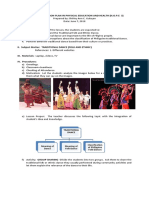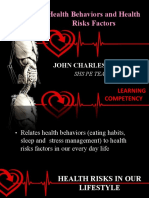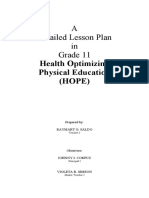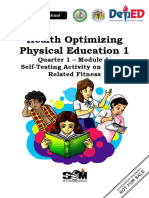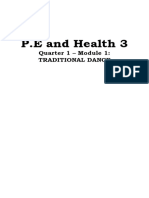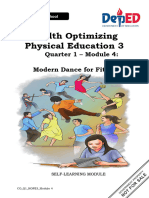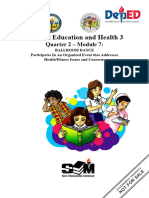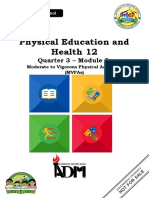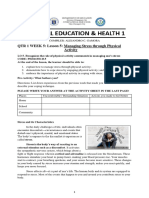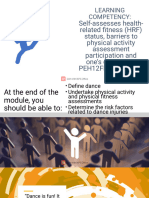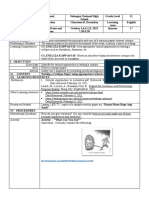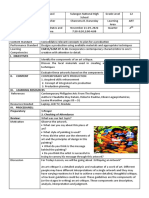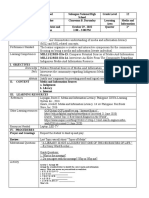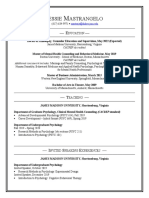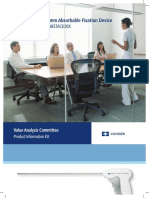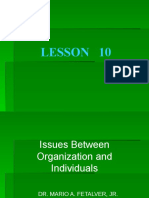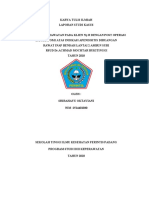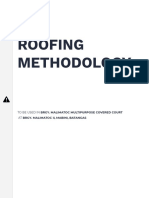100% found this document useful (1 vote)
5K views4 pagesPEH12FH-Ia-19 PEH12FH-Ib-c-2. PEH12FH-If-5. Explains The Role of Physical Activity Assessments
This lesson plan is for a 12th grade Physical Education class at Sulangon National High School. The lesson will take place over 4 class periods in October and focuses on dance. The objectives are to define dance, undertake physical activity assessments, and determine risk factors for dance injuries. The content will cover traditional, modern, ballroom, cheer, and hip-hop dances as well as the benefits of dance and factors that increase injury risk. Some strategies to reduce injury risk among dancers include programmed exercise, adequate recovery, proper equipment, warm-ups, and cross-training.
Uploaded by
darunday charesmaCopyright
© © All Rights Reserved
We take content rights seriously. If you suspect this is your content, claim it here.
Available Formats
Download as DOCX, PDF, TXT or read online on Scribd
100% found this document useful (1 vote)
5K views4 pagesPEH12FH-Ia-19 PEH12FH-Ib-c-2. PEH12FH-If-5. Explains The Role of Physical Activity Assessments
This lesson plan is for a 12th grade Physical Education class at Sulangon National High School. The lesson will take place over 4 class periods in October and focuses on dance. The objectives are to define dance, undertake physical activity assessments, and determine risk factors for dance injuries. The content will cover traditional, modern, ballroom, cheer, and hip-hop dances as well as the benefits of dance and factors that increase injury risk. Some strategies to reduce injury risk among dancers include programmed exercise, adequate recovery, proper equipment, warm-ups, and cross-training.
Uploaded by
darunday charesmaCopyright
© © All Rights Reserved
We take content rights seriously. If you suspect this is your content, claim it here.
Available Formats
Download as DOCX, PDF, TXT or read online on Scribd
/ 4




